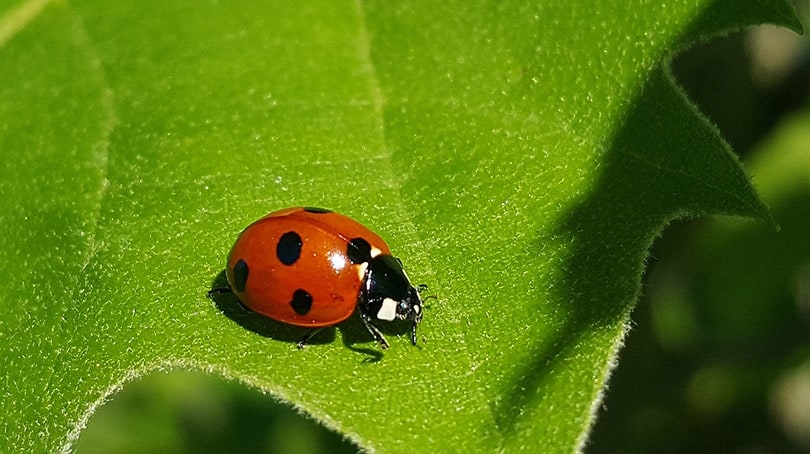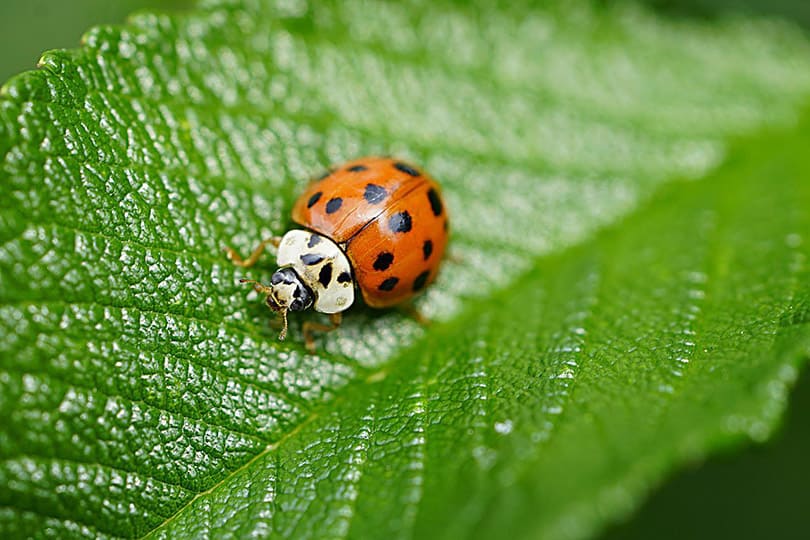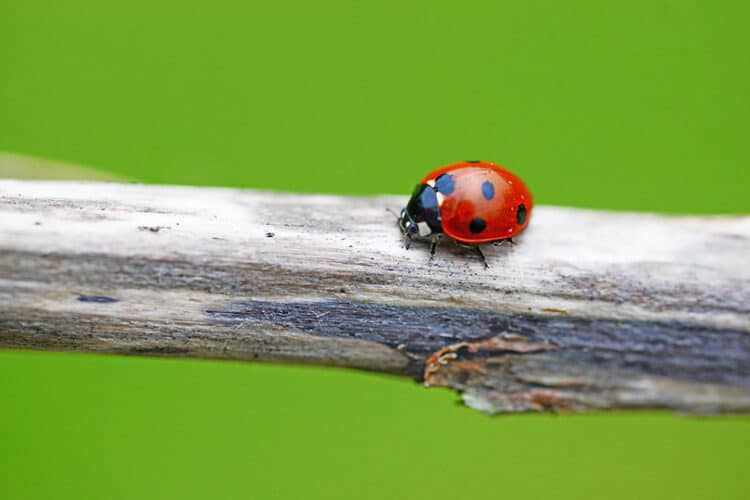Cats love to chase and capture any small critters that they find, including insects. Ladybugs are distinctive insects that are normally easy to spot. There are over 5,000 species of ladybugs around the world! The most common ladybug in North America is the seven-spotted ladybug. You can identify these insects by their small, round, shiny red bodies with black spots.
Ladybugs are considered to be good luck in many cultures, but what if your cat eats one of these bugs? Some insects can be poisonous to humans and pets, but when it comes to ladybugs, your cat is safe. Eating an occasional ladybug won’t harm your cat. They’d have to eat large quantities of ladybugs to feel any effects, and even then, the insects aren’t toxic.
If Your Cat Ate a Ladybug

Don’t panic. The number of ladybugs that your cat would have to eat to become affected by them is more than they can find. The good news is that ladybugs secrete a defensive liquid when they feel threatened. This liquid is foul tasting and smelling, so if your cat eats a ladybug, they may be discouraged from doing it again.
If your cat ingests a large number of ladybugs, this fluid can cause issues. Your cat may experience chemical burns and ulcerations in their mouth and digestive tract. Cats may also have an upset stomach and experience vomiting or diarrhea.
It’s always best to observe your cat after they eat a ladybug or any insect to make sure they aren’t showing any signs of being ill. If you notice any side effects, bring them to a vet.
Eating a ladybug or two will likely cause no side effects, though, and your cat will be fine. Just keep an eye on them to make sure this is the case.
Asian Lady Beetles

Asian lady beetles look like ladybugs but they are not the same insects. Ladybugs are harmless insects that are beneficial to the environment. They don’t bite. Many gardeners love to see these bugs crawling around because they eat garden pests. They also find shelter outdoors when the weather is cold.
Asian lady beetles gather in large groups, especially in warm areas. They contain the same defensive liquid that has a foul smell, but they leave this liquid on the surfaces that they cover. They’re pests, and they will seek shelter inside your home during cold weather.
Ladybugs and Asian lady beetles are similar in appearance, but you can tell them apart in a few key ways. Asian lady beetles are larger than ladybugs and can vary in color from red to orange. They also may not have any spots on their wings. Ladybugs are round, and Asian lady beetles have longer bodies in a more oval shape.
Asian lady beetles also have white heads with a black “M” shape marking. Ladybugs have black heads with a patch of white on each cheek.
If your cat eats an Asian lady beetle, they may dislike the taste. Asian lady beetles are not poisonous to them, but they can cause the same side effects as eating a ladybug might.
Final Thoughts
Eating a ladybug is no big deal for cats. The bugs aren’t poisonous and neither are their lookalikes, the Asian lady beetles. The insects may have a bad taste, but they shouldn’t cause any harm. If your cat eats a large number of ladybugs, they may experience a few side effects, like an upset stomach and mouth ulcerations. If you notice anything not quite right with your cat after they eat an insect, bring them to your vet immediately.
We hope that you’ve learned more about ladybugs and cats and have found relief if your cat has just eaten a ladybug. There’s nothing to worry about and they should be just fine.
Featured Image Credit: Pixabay














